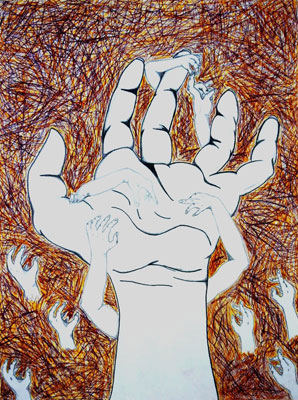All Nonfiction
- Bullying
- Books
- Academic
- Author Interviews
- Celebrity interviews
- College Articles
- College Essays
- Educator of the Year
- Heroes
- Interviews
- Memoir
- Personal Experience
- Sports
- Travel & Culture
All Opinions
- Bullying
- Current Events / Politics
- Discrimination
- Drugs / Alcohol / Smoking
- Entertainment / Celebrities
- Environment
- Love / Relationships
- Movies / Music / TV
- Pop Culture / Trends
- School / College
- Social Issues / Civics
- Spirituality / Religion
- Sports / Hobbies
All Hot Topics
- Bullying
- Community Service
- Environment
- Health
- Letters to the Editor
- Pride & Prejudice
- What Matters
- Back
Summer Guide
- Program Links
- Program Reviews
- Back
College Guide
- College Links
- College Reviews
- College Essays
- College Articles
- Back
7 Steps to Get Clean from Self Harm
Step one: Understand that you need help, that you are addicted, and most importantly, that you can get out.
Step two: Get a support group, people that don’t do any form of self harm (drug abuse and alcoholism are a form of self harm). Surround yourself with people you look up to and want to help you for your benefit. This group should include at least one trusted adult, and if possible, therapy.
Step three: Replace your addictions with something healthier, like working out, skateboarding, writing, drawing, a sport, listening to music, playing music, learning a new hobby, anything that can help you escape during bad times.
Step four: Understand that it is okay to relapse, and that you likely will. Move past it if/when it happens. Confide in a friend, continue your hobbies, and try again to get clean. It is not the end of the world.
Step five: When you feel the time comes, give your blades/materials to a friend. I understand that this is your lifeline, it was once mine as well. But by giving your blades away, you are letting go of that addiction. Wrap it in a box. Give it to a friend, tell them to never open it. Understand that it is okay to one day ask for it back for the purpose of destroying them (as I did my own). Do not keep them- they make it too easy to relapse.
Step six: Understand that recovery does not exist, even long after you’ve stopped self harming. This is an addiction that will likely continue to affect the rest of your life and your decisions. This is okay. This is something that is a part of you, a battle you faced, and it will change you forever. It will make you stronger. It has made you, in part, who you are; be proud of yourself. Not for falling to addiction, but for having the power to get out of it. You have done something many haven’t been able to do. Be proud.
Step seven: Lastly, move on. Take those hobbies you learned, the newfound strength, and do the things you never thought you’d be able to do. Learn what it means to love yourself and your scars. They are apart of something beautiful; they are apart of you.

Similar Articles
JOIN THE DISCUSSION
This article has 0 comments.

I started self harming at the tender age of 12, starting with burning, and eventually progressing to cutting. Cutting took up almost two years of my life, and progressed very fast. I have been clean for 9 months now of any type of self harm, and am going into adulthood completely clean from all of my past addictions.